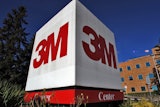The chances of natural gas price spikes this winter are low and getting lower by the day, said a leading gas market analyst on Tuesday.
"Every week that passes without temperatures turning much colder, the likelihood of (price spkes) gets lower and lower," said Andrew Weissman, CEO of EBW AnalyticsGroup, an independent energy analytical company based in Washington, D.C., which serves investors.
In a joint webcast with David Gold of Weather Decision Technologies, an Oklahoma-based private forecasting company, Weissman said the mostly mild December so far has helped pipeline companies increase the amount of gas in storage, making up for consumption in November when winter got an early start. Those storage levels, while still about six percent below year-ago levels, according to the U.S. Energy Information Administration, mean there will be more than enough gas throughout the winter and at the beginning spring when companies begin refilling storage.
Also, the monthly production increases from shale gas wells pretty much nullify the slight storage shortfall, compared to previous years, Weissman said, agreeing with the conclusions of other energy analysts. That makes the weather the critical element.
Gold said there is a about a 55 percent likelihood that weather in the Midwest will be normal or at times even warmer than normal in January and February. He warned though that current global atmospheric conditions could "flip" his company's January and February temperature forecasts. But the likelihood is less than the likelihood for normal winter temperatures, he said.
Even if that flips happens, price increases should be moderate and short-lived, said Weissman. For Dominion East Ohio and Columbia Gas of Ohio customers who have stuck with each utility's Standard Choice Offer, or SCO, Weissman's price forecast is good news. Dominion sets its monthly SCO price by adding 43 cents to the NYMEX price. And that SCO rate is the same no matter what independent company supplies the gas.
Columbia Gas sets its monthly SCO rate by adding $1.40 to the NYMEX price, which is expressed as a 14-cent increase to customers who are billed per 100 cubic foot increments, or Ccf, rather than by the Mcf. The price of natural gas January contracts closed Tuesday on New York Mercantile Exchange at $3.64 per million BTUs (the amount of energy in about 1,00 cubic feet). That's less than the $3.72 NYMEXt price for gas being delivered this month—and well below the January 2014 price of $4.41, set before the polar vortex outbreaks in January.
February 2014 prices were nearly $5.56 an Mcf.Weissman said NYMEX gas prices could range as low as $3.15 to $3.25 an Mcf next fall.
The EIA on Tuesday was a bit more conservative. The agency said spot wholesale prices at a pipeline hub in the south, which is used in NYMEX future prices, should remain above $4 through January. The agency said it expects spot prices to average about $3.83 per Mcf for the year 2015. That's down from the $4.44 average spot price this year.
And what about the polar vortex? Those arctic winds that normally just circle the north pole escaped last winter, making a deep freeze of large portions of the nation. Neither federal nor most private forecasters—including Weather Decision Technologies—see that happening this year.
Federal forecasters at the National Oceanic and Atmospheric Administration's Climate Prediction Center see the chances of normal winter temperatures in January and February for the Midwest. AccuWeather forecasters are not calling for an escape of the polar vortex, but they do see a colder-than-normal January and probably a colder-than-normal February for Northeast Ohio and the lower Great Lakes states in general.
"We expect January and February to be much harsher than December temperatures, said Jack Boston, AccuWeather senior meteorologist and long-range forecaster. "We expect the average temperature to be 2 to 3 degrees below normal," he said, referring to the average temperature for the entire of January.























